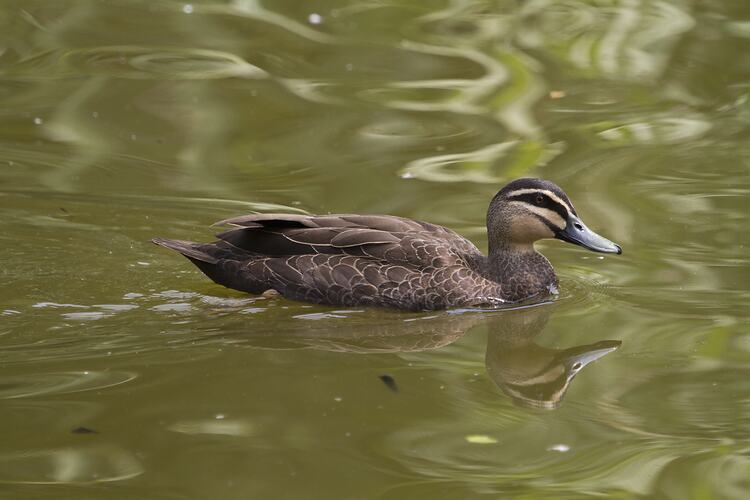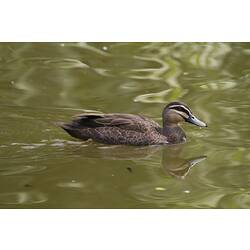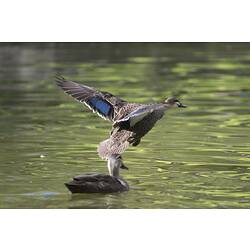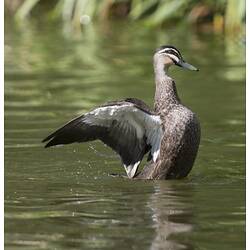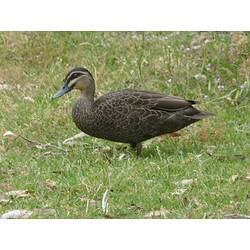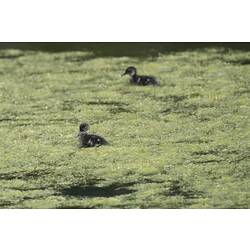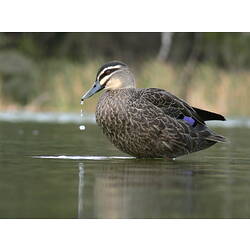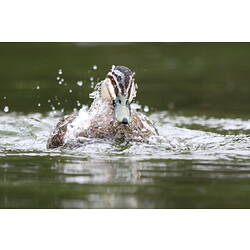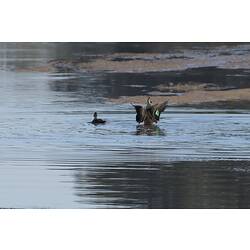General Description
Body mottled dark brown. Head dark brown with a cream stripe above and below the eye, dark stripe through the eye. Iris brown, bill grey. There is an iridescent green patch (speculum) in the wings. Bill to tail length up to 60 cm. Call (females) a raucous, rapid quacking starting very loud then decreasing.
Biology
Pacific Black Ducks mostly eat plant material, favouring the seeds of aquatic and waterside plants. They also eat aquatic animals including insects, snails and small crayfishes. The ducks feed by dabbling at the surface or upending to reach foods lower down. Young birds pair up in late summer or early autumn, and pairs usually remain together for life. Breeding begins in winter when the ducks choose their nest site - typically a tree hollow or, in some cases, a well-concealed site on the ground. The usual clutch size is 10-12 eggs. The female duck incubates the eggs, while the male duck stays nearby guarding the nest site. They are usually seen in pairs or small flocks and readily mix with other duck species and are a common site in ornamental lakes and urban ponds.
Distribution
Pacific Islands, Indonesia, Papua New Guinea, East Timor, New Zealand, mainland Australia (except arid areas) and Tasmania and Macquarie Island.
Habitat
Terrestrial wetlands, sheltered estuaries and sheltered coastal waters. Can make use of very small water bodies, including urban ponds.
More Information
-
Animal Type
-
Animal SubType
-
Brief Id
A dabbling duck with conspicuous cream and black stripes on the side of the head and a green patch on the wing.
-
Colours
Brown, White, Black, Cream
-
Maximum Size
60 cm
-
Habitats
Wetland, Urban, DryForest, WetForest, Woodland, Mallee, Grassland
-
Diet
Omnivore
-
Diet Categories
Insects, Crustaceans, snails
-
Endemicity
-
Commercial
No
-
Conservation Statuses
CITES: Not listed, FFG Threatened List: Not listed, EPBC Act 1999: Not listed, IUCN Red List: Least Concern
-
Taxon Name
-
Common Name
Pacific Black Duck
-
Kingdom
-
Phylum
-
Subphylum
-
Class
-
Subclass
-
Order
-
Family
-
Subfamily
-
Genus
-
Species Name
superciliosa
